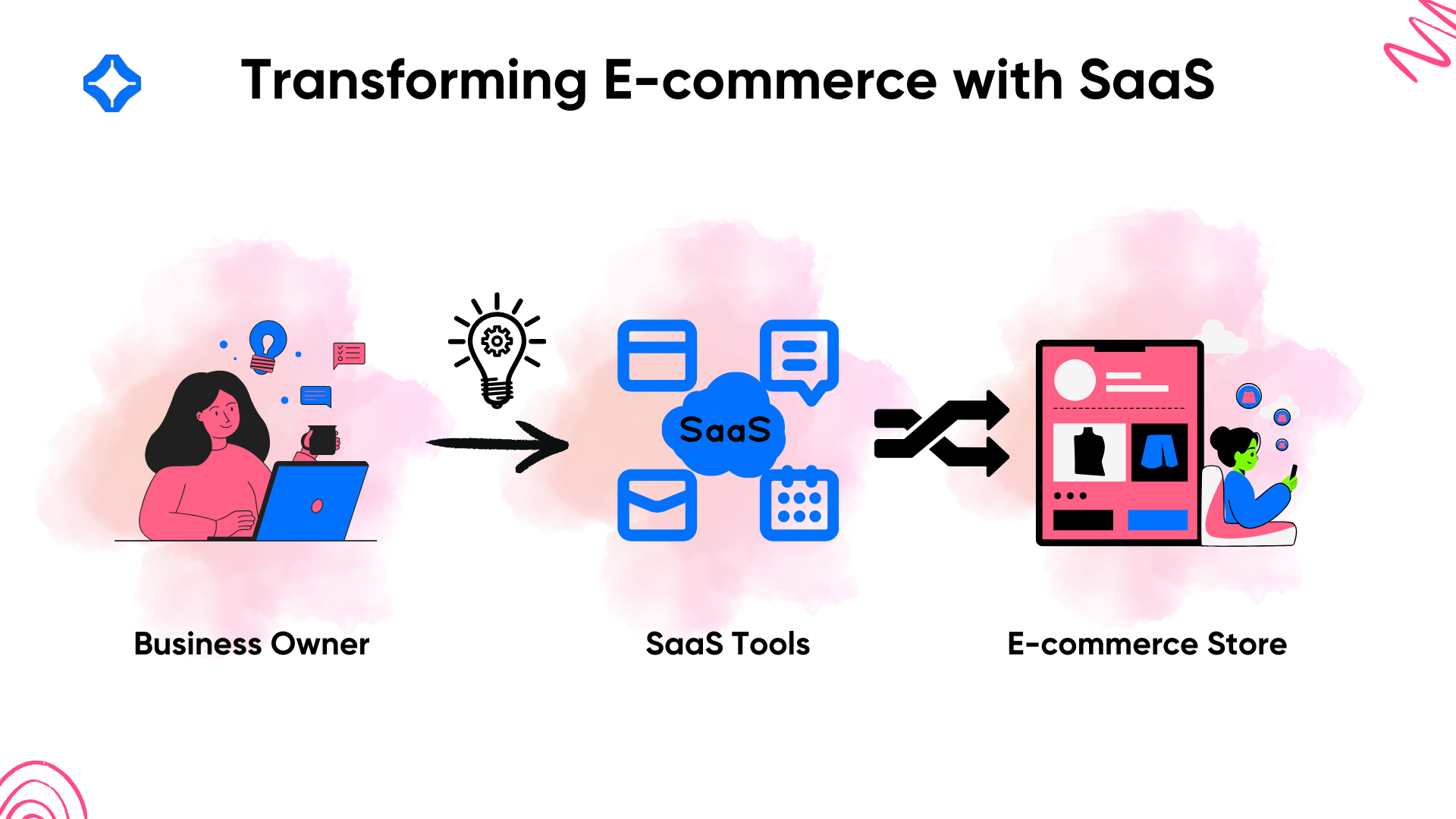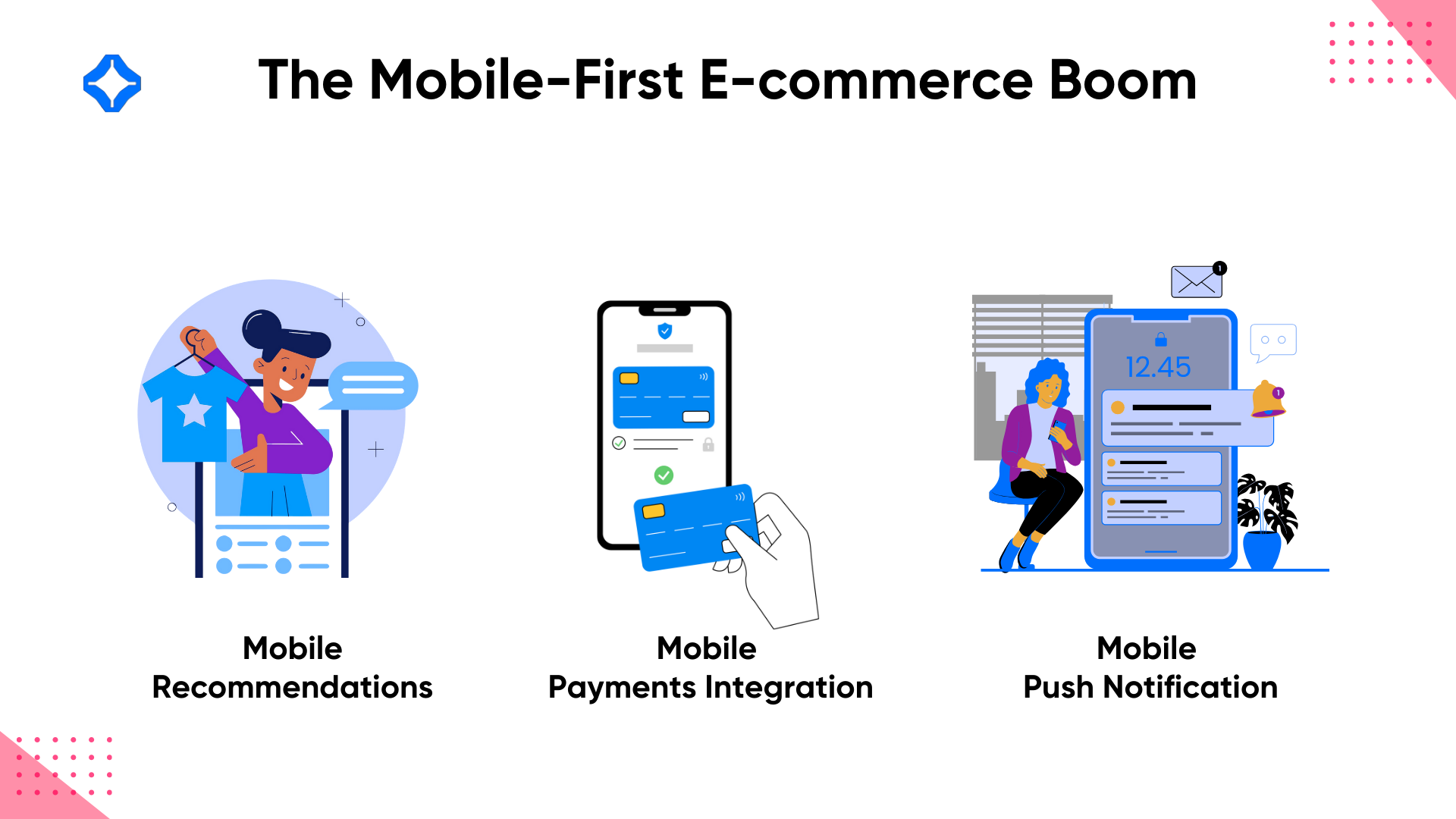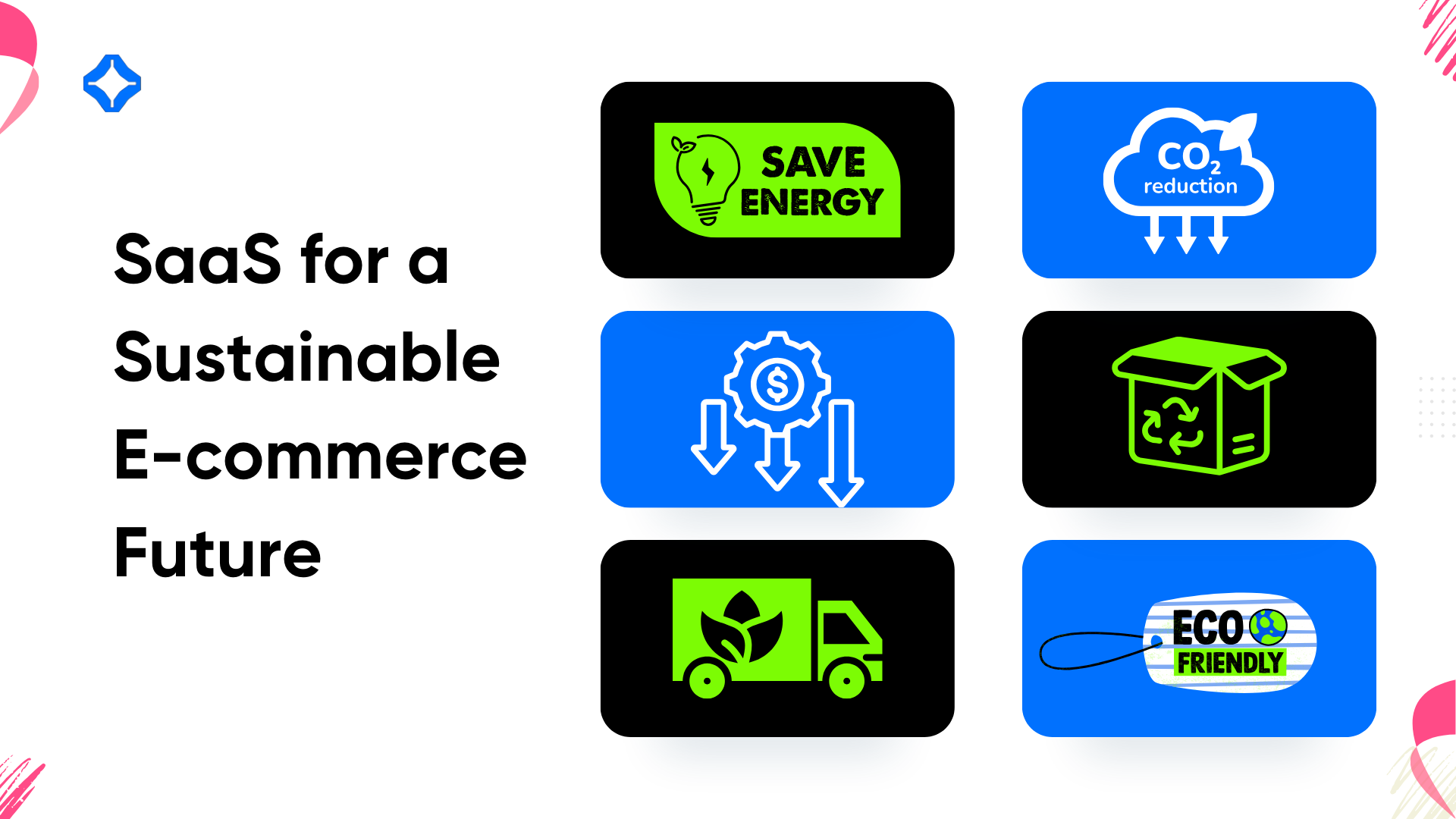E-commerce is growing rapidly, setting the stage for a transformative year 2025. Businesses are adopting advanced technologies to meet changing customer expectations and stay ahead of competitors.
SaaS platforms play a key role in this shift, providing scalable, innovative solutions that reshape e-commerce. From personalized shopping experiences to sustainability efforts, SaaS platforms are at the forefront of driving new trends in the industry.
Overview of E-commerce in 2025
The e-commerce industry in 2025 is defined by rapid technological advancements and evolving customer expectations. Companies are adopting innovative tools to create seamless shopping experiences, streamline processes, and widen their market presence.
Key trends include tailored shopping experiences, mobile-first approaches, and strategies to deepen customer engagement. With online shopping becoming an essential part of daily life, businesses are turning to SaaS platforms to remain competitive, improve efficiency, and provide meaningful value to their customers.
The Role of SaaS Platforms in Transforming E-commerce

SaaS platforms have become essential for e-commerce businesses by providing tools to streamline operations and improve customer experiences. These platforms enable businesses to scale quickly without requiring significant upfront investments in technology infrastructure.
SaaS solutions support features like automated inventory management, real-time analytics, and advanced marketing tools, helping e-commerce businesses operate more efficiently. Their flexibility allows companies to easily adapt to changing trends and customer demands.
Personalization and AI-driven shopping Experiences
Tailored Recommendations
AI-driven SaaS tools help businesses offer personalized product recommendations by evaluating customer interests and browsing habits. These tailored suggestions boost customer engagement and drive sales by showcasing items that match individual interests.
Chatbots and Virtual Assistants
SaaS platforms equipped with AI chatbots streamline customer interactions by answering queries, providing product guidance, and recommending purchases. These tools offer instant support, enhancing the shopping experience while reducing the need for direct human involvement.
Predictive Analytics
Predictive analytics in SaaS platforms help businesses understand customer behavior and anticipate needs. This allows companies to optimize inventory, ensuring popular products remain in stock and enhancing overall customer satisfaction.
Personalized Email Campaigns
SaaS tools integrate AI capabilities to create targeted email campaigns that reflect customer’s preferences and shopping behavior. These personalized messages increase the likelihood of engagement, driving repeat purchases and customer loyalty.
Dynamic Pricing Strategies
AI-driven SaaS platforms help businesses apply dynamic pricing models that adjust prices based on demand, market competition, and customer behavior. This strategy ensures competitive pricing while maximizing revenue and improving sales performance and customer satisfaction.
Omnichannel Strategies Powered by SaaS
Seamless Customer Journeys
SaaS platforms simplify omnichannel strategies by unifying data from online stores, mobile apps, and physical locations. This integration creates a smooth shopping experience, allowing customers to transition effortlessly between channels without disruptions.
Centralized Data Management
Businesses use SaaS tools to centralize customer and inventory data, enabling real-time synchronization across all sales platforms. This ensures that stock information is consistent and customers experience accurate and reliable service at every touchpoint.
Cross-Channel Marketing
SaaS platforms equip businesses with the ability to execute coordinated marketing campaigns across channels like social media, email, and in-store promotions. These cross-platform campaigns enhance customer engagement and boost brand visibility.
Unified Customer Support
Omnichannel SaaS solutions integrate customer support channels, such as live chat, email, and in-store assistance, into a single platform. This ensures consistent and personalized support, regardless of where the customer interacts with the brand.
Flexible Payment Options Across Channels
SaaS platforms facilitate omnichannel payment solutions, enabling customers to pay using their preferred online and offline methods. This flexibility improves convenience and satisfaction, encouraging repeat purchases.
Data-Driven Channel Optimization
SaaS tools analyze performance across all channels, providing actionable insights to optimize each one. Businesses can identify which channels perform best and adjust their strategies to focus resources where they deliver the greatest impact.
The Growth of Mobile-First E-commerce Solutions

Mobile Optimization
SaaS platforms prioritize mobile-first designs to ensure websites and apps deliver seamless experiences on smartphones and tablets. This strategy targets the growing number of customers who use mobile devices for online shopping.
Mobile Payment Integration
SaaS solutions integrate modern mobile payment methods, including digital wallets and QR codes, to streamline the checkout process. This ease of use improves the shopping experience and boosts conversion rates among mobile users.
App-Based Shopping
SaaS platforms empower businesses to develop user-friendly mobile apps that offer personalized recommendations and exclusive deals. These apps foster stronger customer loyalty and drive repeat purchases.
Push Notification Marketing
SaaS tools enable push notification campaigns that alert customers about new deals, flash sales, or personalized offers directly on their mobile devices. This targeted approach increases engagement and boosts sales.
Subscription Models and Customer Retention Trends
Subscription-Based E-commerce
SaaS platforms have revolutionized subscription-based e-commerce by offering tools to manage repeating services and product deliveries. Businesses can set up subscription plans for essentials like groceries or niche products like curated beauty boxes.
This model ensures a steady revenue flow while cultivating long-term customer relationships. Automated renewals and personalized options keep subscribers engaged and satisfied, reducing the likelihood of cancellations. Subscription models also enable businesses to forecast demand more accurately, optimizing inventory and supply chains.
Loyalty Programs
Loyalty programs have become an integral part of customer retention strategies, and SaaS tools make creating and managing these programs seamless. Businesses can build stronger relationships and encourage ongoing engagement by rewarding repeat customers with discounts, reward points, or exclusive perks.
A multi-level loyalty program can inspire customers to spend more to access better rewards and exclusive advantages. SaaS platforms track customer interactions and spending habits, allowing businesses to offer tailored incentives that resonate with individual preferences.
These programs not only improve retention but also increase the lifetime value of each customer.
Churn Analysis
Customer churn remains the biggest challenge in subscription-based e-commerce, but SaaS analytics tools offer valuable insights to address it efficiently. Businesses can identify at-risk subscribers by analyzing patterns such as declined payments, reduced engagement, or service complaints.
For example, if a customer skips multiple subscription cycles, the system can trigger a targeted retention campaign offering discounts or personalized recommendations. Proactive measures like these help reduce churn rates and improve customer loyalty.
Sustainability in E-commerce and SaaS Support

Eco-Friendly Operations
SaaS platforms play a crucial role in helping businesses implement eco-friendly operations by providing tools to monitor and optimize energy usage. These platforms enable companies to track their real-time carbon emissions, water usage, and energy consumption.
With this data, businesses can identify inefficiencies and take actionable steps to minimize their environmental footprint.
For example, using automation to reduce energy use during non-peak hours can significantly cut operational costs and emissions. By integrating sustainability into daily operations, companies can demonstrate their commitment to environmental responsibility.
Green Logistics
SaaS solutions are transforming logistics by optimizing delivery routes to reduce fuel consumption and emissions. These tools help businesses save costs while minimizing their environmental impact through efficient transportation planning.
SaaS tools support sustainable packaging initiatives by analyzing material usage and suggesting alternatives that minimize waste. As consumers increasingly favor eco-conscious brands, businesses adopting green logistics can appeal to environmentally aware shoppers.
Transparent Reporting
Transparency is key to building trust with today’s environmentally conscious consumers, and SaaS platforms provide tools to support this. With detailed sustainability reports, businesses can showcase their efforts to reduce emissions, optimize energy use, and eliminate waste.
These reports often include metrics on carbon neutrality goals, recycled material usage, and supply chain sustainability initiatives. By sharing these insights, businesses can strengthen customer loyalty and demonstrate accountability, which is becoming a critical factor for long-term success in e-commerce.
Social Commerce Integration Through SaaS Platforms
Shoppable Social Media
SaaS tools make it seamless for businesses to integrate their product catalogs into social media platforms. This integration lets customers shop for products directly within apps like Instagram or Facebook, eliminating the need to navigate to separate websites.
Influencer Collaboration
SaaS platforms simplify influencer marketing by offering tools to facilitate collaboration with creators. These solutions track important metrics such as reach, engagement, and conversions, enabling businesses to evaluate the effectiveness of their influencer campaigns.
Social Engagement Analytics
Analytics tools in SaaS platforms help businesses track customer interactions on social media in real-time. Metrics such as likes, shares, comments, and click-through rates provide insights into campaign performance.
Live Shopping Features
SaaS platforms now support live shopping events, where businesses can showcase products in real time through live video streams. These events allow customers to interact, ask questions, and make purchases instantly, creating a dynamic shopping experience.
Automated Social Ads
SaaS platforms simplify social commerce by automating the creation and targeting of ads. Using customer data and AI, these tools generate personalized ads for platforms like Facebook, Instagram, and TikTok, reaching the right audience at the right time. This automation enhances campaign efficiency and maximizes ROI.
Conclusion
E-commerce in 2025 revolves around tailored experiences, eco-conscious practices, and seamless customer interactions, all made possible by SaaS platforms. These solutions empower businesses to adapt to emerging trends, streamline their processes, and provide exceptional value to their customers. As e-commerce continues to grow, SaaS platforms will play an important role in shaping the industry’s growth and innovation.